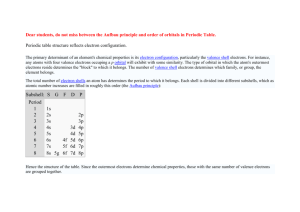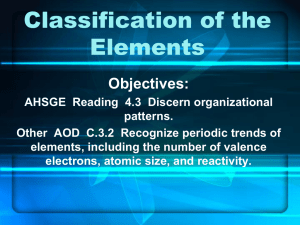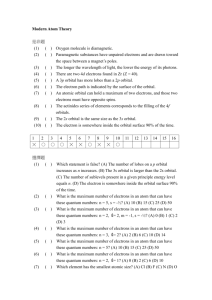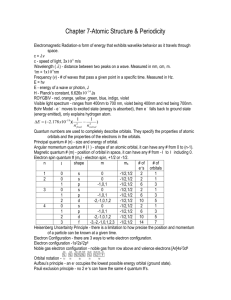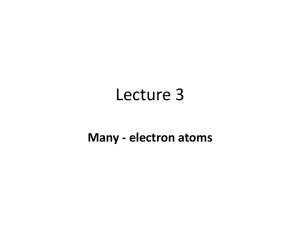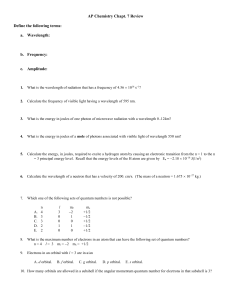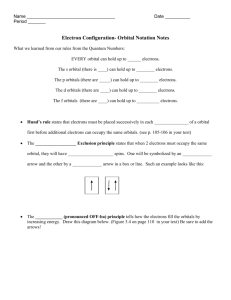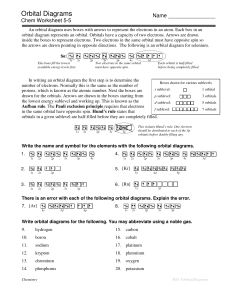Patterns in the Periodic Table Powerpoint
advertisement
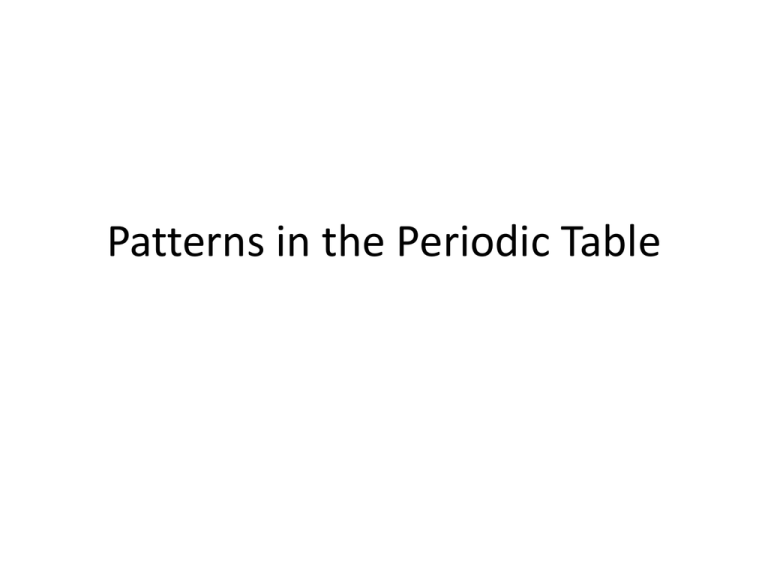
Patterns in the Periodic Table In a row… Period • A row on the periodic table is called a period. A period… 1 2 3 4 5 6 7 Orbitals… Period • A row on the periodic table is called a period. • The number of the period indicates how many electron orbitals there are in each atom. Osmium… 6 Maximum electrons… Period • A row on the periodic table is called a period. • The number of the period indicates how many electron orbitals there are in each atom. • The number of elements in a period also indicates the number of electrons that can fit in that orbital A period… 1 2 Period 2 1 has 8 2 elements The second first orbital orbital cancan hold 2 8 electrons A group • Look at your Bohr models for Nitrogen and Phosphorus, Oxygen and Sulphur, and Flourine and Chlorine, see anything interesting? • In a group, such as group 1, the outermost orbital has the same number of electrons in each element Group 1 1p+ 1e- 11p+ 12n0 2e- 8e- 1e- Hydrogen Sodium 3p+ 4n0 Lithium 2e- 1e- 19p+ 20n0 2e- 8e- 8e- 1e- Potassium A group • In a group, such as group 1, the outermost orbital has the same number of electrons in each element • Because electrons are the outermost particles in an atom, they are the ones that give an atom it’s properties, so elements with similar outer orbitals, have similar properties Groups Group 1: Alkali Metals Very Reactive, react violently with water Groups Group 17: Halogens Very reactive nonmetals Groups Group 18: Noble (Inert) Gasses Unreactive gaseous elements Two Major Divisions of Elements This line is the division between METALS and NONMETALS Why does the periodic table have an extra section? To save space! To save space!

